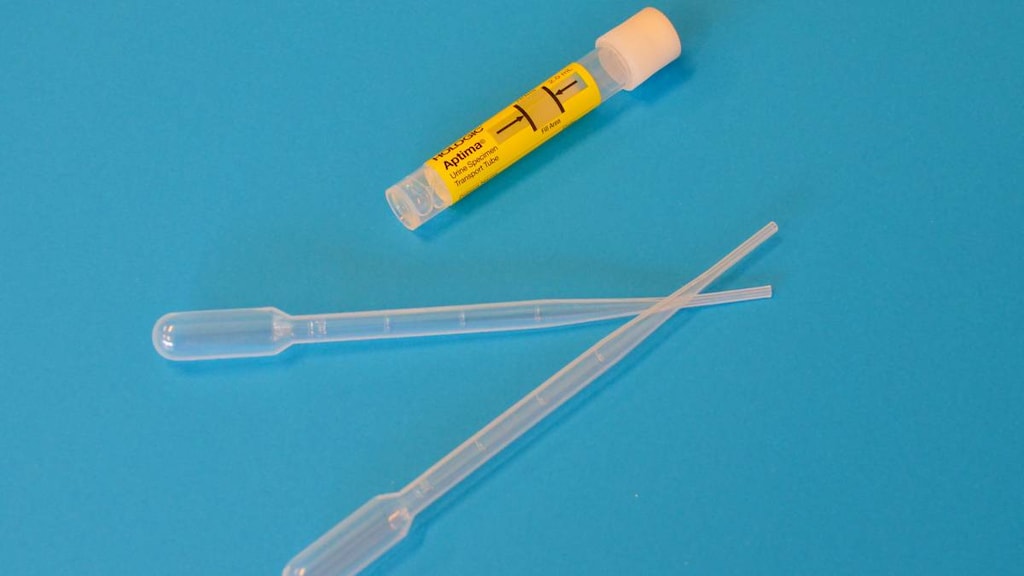Dosage Forms
Excipient information presented when available (limited, particularly for generics); consult specific product labeling.
Solution Reconstituted, Intravenous [preservative free]:
Avycaz: Ceftazidime 2 g and avibactam 0.5 g (1 ea)
Pharmacology
Mechanism of Action
Ceftazidime inhibits bacterial cell wall synthesis by binding to one or more of the penicillin-binding proteins (PBPs) which in turn inhibits the final transpeptidation step of peptidoglycan synthesis in bacterial cell walls, thus inhibiting cell wall biosynthesis. Bacteria eventually lyse due to ongoing activity of cell wall autolytic enzymes (autolysins and murein hydrolases) while cell wall assembly is arrested.
Avibactam inactivates some beta-lactamases and protects ceftazidime from degradation.
Pharmacokinetics/Pharmacodynamics
Distribution
Vd:
Single dose: Adults: Mean: Ceftazidime: 18.1 L; Avibactam: 23.2 L
Multiple dose: Adults: Mean: Ceftazidime: 17 L; Avibactam: 22.2 L
Metabolism
Ceftazidime: ~80% to 90% of dose eliminated as unchanged drug; Avibactam: Not metabolized
Excretion
Ceftazidime: Urine (~80% to 90% as unchanged drug); Avibactam: Urine (97%)
Half-Life Elimination
Single dose:
Ceftazidime:
Children ≥6 years to <12 years: Median: 1.6 hours (0.9 to 1.8 hours) (Bradley 2016)
Children ≥12 years and Adolescents: Median: 1.7 hours (0.9 to 2.8 hours) (Bradley 2016)
Adults: Mean: 3.27 hours
Avibactam:
Children ≥6 years to <12 years: Median: 1.7 hours (0.9 to 2 hours) (Bradley 2016)
Children ≥12 years and Adolescents: Median: 1.6 hours (0.9 to 2.8 hours) (Bradley 2016)
Adults: Mean: 2.22 hours
Multiple dose: Adults: Mean: Ceftazidime: 2.76 hours; Avibactam: 2.71 hours
Protein Binding
Ceftazidime: <10%; Avibactam: 5.7% to 8.2%
Use in Specific Populations
Special Populations: Renal Function Impairment
Half-life increases in patients with impaired renal function; AUC of avibactam increases 2.6-fold, 3.8-fold, and 7-fold in patients with mild, moderate or severe renal impairment, respectively.
Use: Labeled Indications
Intra-abdominal infections, complicated: Treatment of complicated intra-abdominal infections (cIAI) in adult and pediatric patients ≥3 months of age, in combination with metronidazole, caused by Citrobacter freundii complex, Enterobacter cloacae, Escherichia coli, Klebsiella oxytoca, Klebsiella pneumoniae, Proteus mirabilis, and Pseudomonas aeruginosa.
Pneumonia, hospital-acquired and ventilator-associated: Treatment of hospital-acquired bacterial pneumonia and ventilator-associated (HAP/VAP) bacterial pneumonia in adult patients caused by ceftazidime/avibactam-susceptible K. pneumoniae, E. cloacae, E. coli, Serratia marcescens, P. mirabilis, P. aeruginosa, and Haemophilus influenzae.
Urinary tract infections, complicated (including pyelonephritis): Treatment of complicated urinary tract infections (cUTI) (including pyelonephritis) in adult and pediatric patients ≥3 months of age, caused by C. freundii complex, E. cloacae, E. coli, K. pneumoniae, P. mirabilis, and P. aeruginosa.
Contraindications
Known serious hypersensitivity to ceftazidime, avibactam, other cephalosporins, or any component of the formulation
Dosage and Administration
Dosing: Adult
Note: Dosage recommendations are expressed as total grams of the ceftazidime/avibactam combination.
Intra-abdominal infections, complicated: IV: 2.5 g every 8 hours in combination with metronidazole for 5 to 14 days
Pneumonia, hospital-acquired and ventilator-associated (HAP/VAP): IV: 2.5 g every 8 hours for 7 to 14 days
Urinary tract infections, complicated (including pyelonephritis): IV: 2.5 g every 8 hours for 7 to 14 days
Dosing: Geriatric
Refer to adult dosing.
Dosing: Pediatric
Note: Avycaz (ceftazidime and avibactam) is a combination product; each 2.5 g vial contains 2 g ceftazidime and 0.5 g avibactam sodium in a 4:1 ratio. Dosage recommendations are based on the ceftazidime component. Dosing presented is based on traditional infusion method (IV infusion over 2 hours).
Intra-abdominal infections, complicated (cIAI): Note: Use in combination with metronidazole; treat for 5 to 14 days depending upon severity and clinical response:
Infants ≥3 months to <6 months: IV: 40 mg ceftazidime/kg/dose every 8 hours.
Infants ≥6 months, Children, and Adolescents <18 years: IV: 50 mg ceftazidime/kg/dose every 8 hours; maximum dose: 2,000 mg ceftazidime/dose.
Adolescents ≥18 years: 2,000 mg ceftazidime every 8 hours.
Urinary tract infections, complicated (cUTI) (including pyelonephritis): Note: Treat for 7 to 14 days depending upon severity and clinical response:
Infant ≥3 months to <6 months: IV: 40 mg ceftazidime/kg/dose every 8 hours.
Infants ≥6 months, Children, and Adolescents <18 years: IV: 50 mg ceftazidime/kg/dose every 8 hours; maximum dose: 2,000 mg ceftazidime/dose.
Adolescents ≥18 years: 2,000 mg ceftazidime every 8 hours.
Pneumonia, hospital-acquired and ventilator-associated (HAP/VAP): Adolescents ≥18 years: IV: 2,000 mg ceftazidime every 8 hours for 7 to 14 days.
Reconstitution
IV: Reconstitute vial with 10 mL of NS, D5W, SWFI or other compatible solution listed in the manufacturer's labeling (resulting approximate concentration: ceftazidime 167 mg/mL and avibactam 42 mg/mL); mix gently until completely dissolved. Further dilute in a compatible IV solution to achieve a ceftazidime concentration of 8 to 40 mg/mL and an avibactam concentration of 2 to 10 mg/mL; mix gently. Solution ranges in color from clear to light yellow.
Administration
IV: Administer by intermittent infusion over 2 hours.
Storage
Vials: Store intact vials at 25°C (77°F); excursions permitted between 15°C and 30°C (59°F and 86°F). Protect from light. After reconstitution, contents of the vial should be transferred within 30 minutes to an infusion bag for further dilution.
Intermittent IV infusion: Admixed solutions in NS, D5W, LR, or any combination of dextrose and sodium chloride injection containing up to dextrose 2.5% and sodium chloride 0.45% are stable up to 12 hours at room temperature and 24 hours at 2°C to 8°C (36°F to 46°F). Use solutions previously stored at 2°C to 8°C (36°F to 46°F) within 12 hours of subsequent storage at room temperature.
Drug Interactions
Aminoglycosides: Cephalosporins (3rd Generation) may enhance the nephrotoxic effect of Aminoglycosides. Monitor therapy
BCG (Intravesical): Antibiotics may diminish the therapeutic effect of BCG (Intravesical). Avoid combination
BCG Vaccine (Immunization): Antibiotics may diminish the therapeutic effect of BCG Vaccine (Immunization). Monitor therapy
Chloramphenicol (Systemic): May diminish the therapeutic effect of CefTAZidime. Management: Consider using a different combination of antimicrobials, especially if bactericidal activity is desired. If these agents are combined, monitor for reduced antimicrobial effectiveness and/or therapeutic failure. Consider therapy modification
Cholera Vaccine: Antibiotics may diminish the therapeutic effect of Cholera Vaccine. Management: Avoid cholera vaccine in patients receiving systemic antibiotics, and within 14 days following the use of oral or parenteral antibiotics. Avoid combination
Lactobacillus and Estriol: Antibiotics may diminish the therapeutic effect of Lactobacillus and Estriol. Monitor therapy
Nitisinone: May increase the serum concentration of OAT1/3 Substrates. Monitor therapy
Pretomanid: May increase the serum concentration of OAT1/3 Substrates. Monitor therapy
Probenecid: May increase the serum concentration of Avibactam. Avoid combination
Sodium Picosulfate: Antibiotics may diminish the therapeutic effect of Sodium Picosulfate. Management: Consider using an alternative product for bowel cleansing prior to a colonoscopy in patients who have recently used or are concurrently using an antibiotic. Consider therapy modification
Teriflunomide: May increase the serum concentration of OAT1/3 Substrates. Monitor therapy
Tolvaptan: May increase the serum concentration of OAT1/3 Substrates. Management: Patients being treated with the Jynarque brand of tolvaptan should avoid concomitant use of OAT1/3 substrates. Concentrations and effects of the OAT1/3 substrate would be expected to increase with any combined use. Consider therapy modification
Typhoid Vaccine: Antibiotics may diminish the therapeutic effect of Typhoid Vaccine. Only the live attenuated Ty21a strain is affected. Management: Vaccination with live attenuated typhoid vaccine (Ty21a) should be avoided in patients being treated with systemic antibacterial agents. Use of this vaccine should be postponed until at least 3 days after cessation of antibacterial agents. Consider therapy modification
Vitamin K Antagonists (eg, warfarin): Cephalosporins may enhance the anticoagulant effect of Vitamin K Antagonists. Monitor therapy
Test Interactions
Ceftazidime: Positive direct Coomb. False-positive reaction for urine glucose with certain methods; use glucose tests based on enzymatic glucose oxidase reactions.
Adverse Reactions
Also see ceftazidime monograph.
>10%: Hematologic & oncologic: Positive direct coombs test (3% to 21%)
1% to 10%:
Dermatologic: Injection site phlebitis (children and adolescents: >3%; adults: <1%), skin rash (children and adolescents: >3%; adults: <1%), pruritus (2%)
Gastrointestinal: Vomiting (>3%), diarrhea (≥3%), nausea (3%), constipation (2%), upper abdominal pain (1%)
<1%, postmarketing, and/or case reports: Acute renal failure, anxiety, candidiasis, Clostridioides difficile-associated diarrhea, dysgeusia, hypokalemia, increased gamma-glutamyl transferase, increased serum alanine aminotransferase, increased serum aspartate aminotransferase, leukopenia, maculopapular rash, nephrolithiasis, renal insufficiency, thrombocythemia, thrombocytopenia, urticaria
Warnings/Precautions
Concerns related to adverse effects:
- Hypersensitivity reactions: Serious and occasionally severe or fatal hypersensitivity (anaphylactic) reactions and serious skin reactions have been reported in patients receiving beta-lactam drugs. Before initiating therapy, carefully investigate previous penicillin, cephalosporin, or carbapenem hypersensitivity. Use caution if given to a patient with a penicillin or other beta-lactam allergy; cross sensitivity has been established. If an allergic reaction occurs, discontinue and institute appropriate management.
- Neurotoxicity: Severe neurological reactions have been reported with ceftazidime, including asterixis, coma, encephalopathy, myoclonus, neuromuscular excitability, seizures, and nonconvulsive status epilepticus. Risk may be increased in the presence of renal impairment; ensure dose adjusted for renal function. Discontinue therapy if patient develops neurotoxicity.
- Superinfection: Prolonged use may result in fungal or bacterial superinfection, including C. difficile-associated diarrhea (CDAD) and pseudomembranous colitis; CDAD has been observed >2 months postantibiotic treatment.
Disease-related concerns:
- Renal impairment: In a complicated intra-abdominal infection clinical trial, adult patients with a CrCl of 30 to 50 mL/minute had lower clinical cure rates than those with CrCl >50 mL/minute; however, these patients received a daily dose that was 33% lower than what is currently recommended for patients with this degree of renal impairment. Decreased clinical response was not seen in patients with a baseline CrCl of 30 to 50 mL/minute in complicated UTI clinical trials. Monitor renal function at baseline and at least daily in adult and pediatric patients with changing renal function. Adjust the dose accordingly.
Concurrent drug therapy issues:
- Drug-drug interactions: Potentially significant interactions may exist, requiring dose or frequency adjustment, additional monitoring, and/or selection of alternative therapy. Consult drug interactions database for more detailed information.
Monitoring Parameters
Monitor for signs of anaphylaxis during first dose. Monitor renal function at baseline in all patients, and at least daily in patients with changing renal function.
Pregnancy
Pregnancy Considerations
Adverse events have not been observed in animal reproduction studies conducted with ceftazidime; adverse events have been observed in some animal reproduction studies conducted with avibactam.
Patient Education
What is this drug used for?
- It is used to treat bacterial infections.
Frequently reported side effects of this drug
- Diarrhea
- Nausea
- Vomiting
Other side effects of this drug: Talk with your doctor right away if you have any of these signs of:
- Seizures
- Stiff muscles
- Tremors
- Abnormal movements
- Confusion
- Sensing things that seem real but are not
- Passing out
- Injection site pain or irritation
- Clostridioides (formerly Clostridium) difficile-associated diarrhea like abdominal pain or cramps, severe diarrhea or watery stools, or bloody stools.
- Signs of a significant reaction like wheezing; chest tightness; fever; itching; bad cough; blue skin color; seizures; or swelling of face, lips, tongue, or throat.
Note: This is not a comprehensive list of all side effects. Patient should consult prescriber for additional questions.
Consumer Information Use and Disclaimer: This information should not be used to decide whether or not to take this medicine or any other medicine. Only the healthcare provider has the knowledge and training to decide which medicines are right for a specific patient. This information does not endorse any medicine as safe, effective, or approved for treating any patient or health condition. This is only a brief summary of general information about this medicine. It does NOT include all information about the possible uses, directions, warnings, precautions, interactions, adverse effects, or risks that may apply to this medicine. This information is not specific medical advice and does not replace information you receive from the healthcare provider. You must talk with the healthcare provider for complete information about the risks and benefits of using this medicine.




